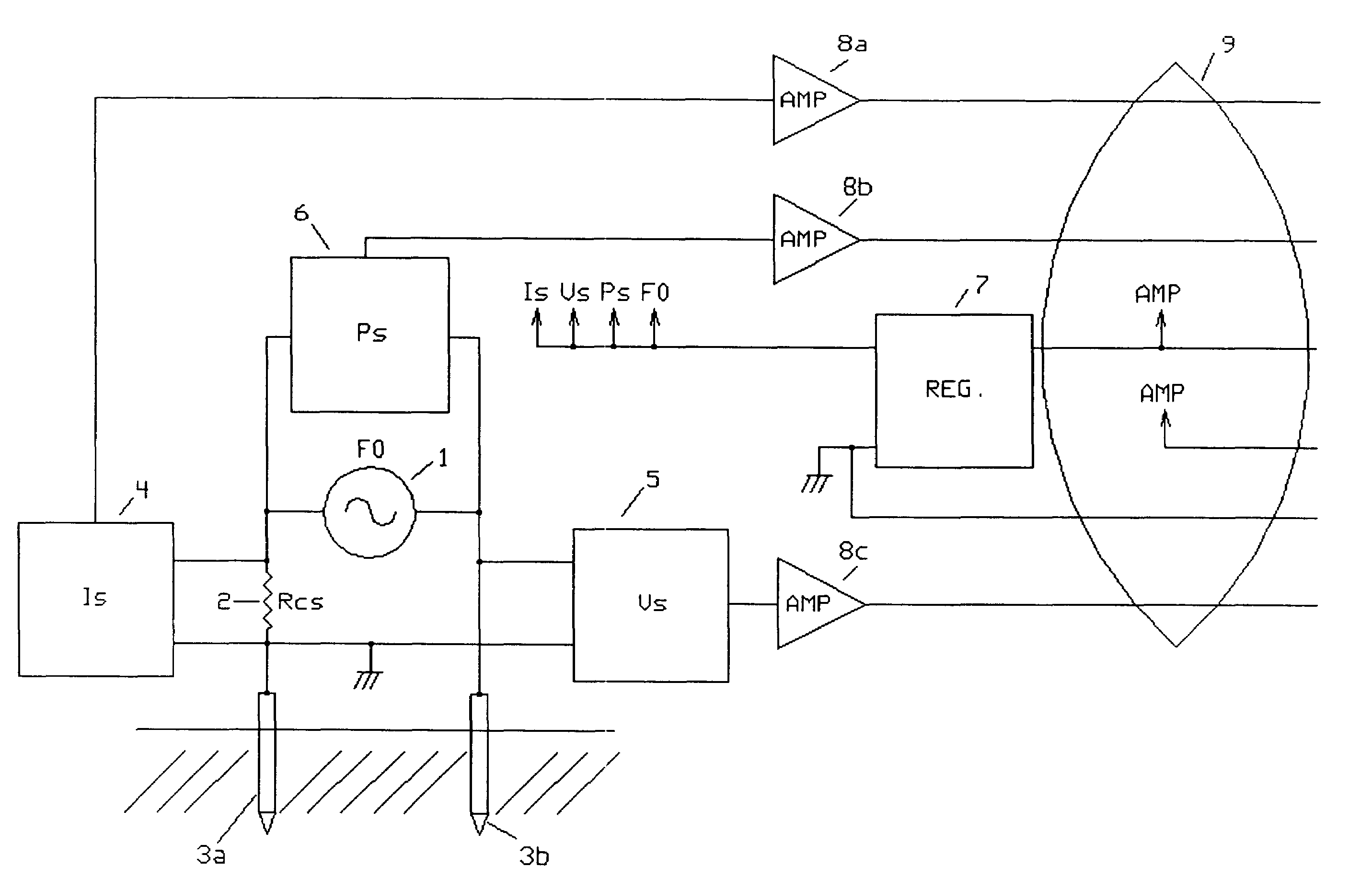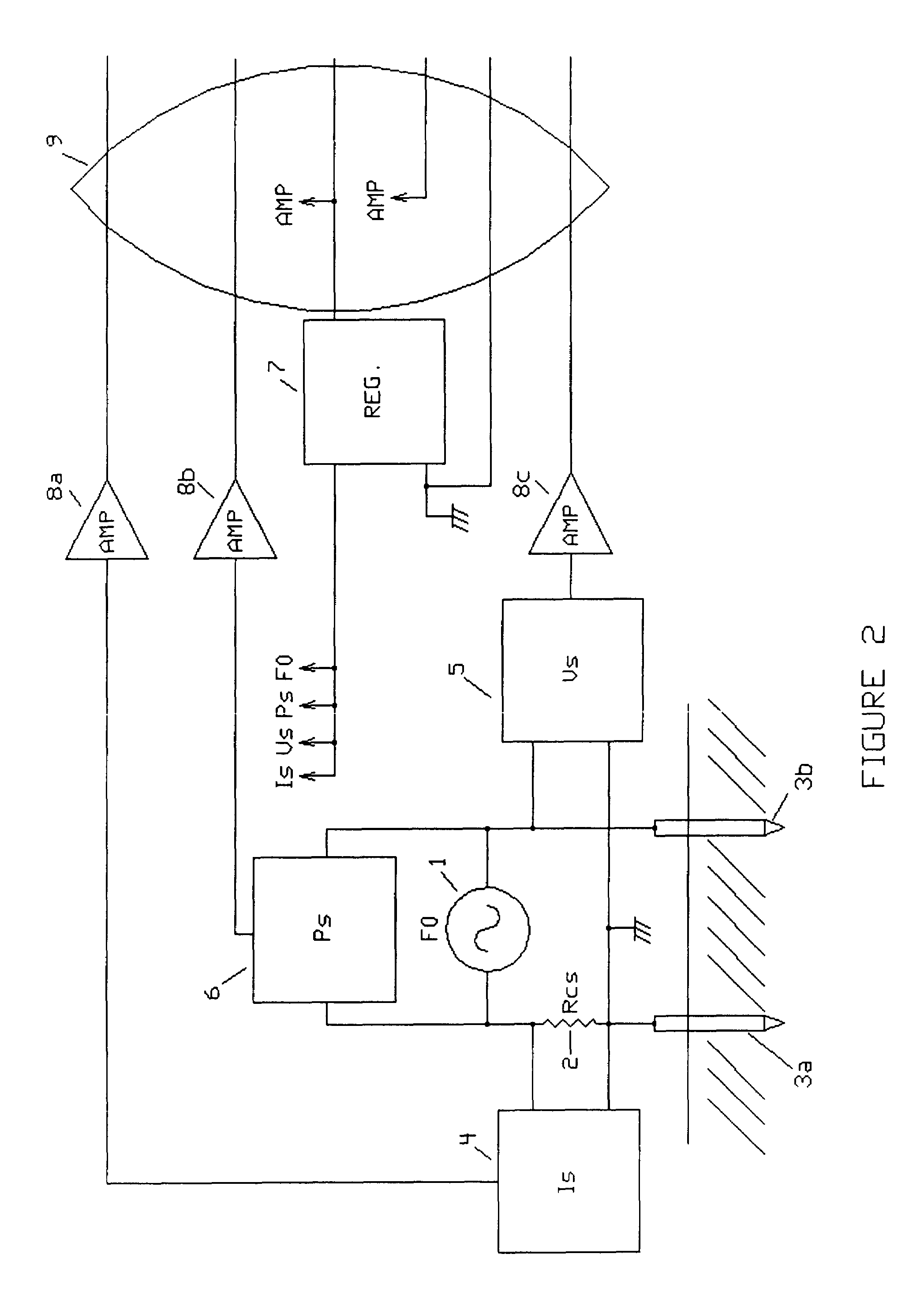Electrically measuring soil dry density
a technology of dry density and soil, applied in the direction of earth material testing, resistance/reaction/impedence, instruments, etc., can solve the problems of high cost of nuclear density gauge calibration, and high cost of repair. , to achieve the effect of low cos
- Summary
- Abstract
- Description
- Claims
- Application Information
AI Technical Summary
Benefits of technology
Problems solved by technology
Method used
Image
Examples
Embodiment Construction
[0030]An embodiment of the EDG invention is described with reference to the figures using reference designations as shown in the figures. Referring to FIG. 2, the measurement components of the preferred EDG invention comprise a 3.0 mHz sinusoidal voltage source (Fo) 1, a current sensing resistor (Rcs) 2, soil electrode probes 3a,b, a voltage measurement circuit that measures the voltage across the current sensing resistor 4, a voltage measurement circuit that measures the voltage across the two soil electrical probes 5, a phase difference measurement circuit that determines the phase difference between the current related voltage and the soil related voltage 6, local power regulators 7, and buffer amplifiers 8 that send the measured signals through a cable 9 to the EDG Console interface circuit board 10 (FIG. 3)
[0031]The soil electrical probes 3a,b are 3 in.×¼ in. dia. steel rod that has been tapered for easier entry into the soil. Alternately, conical or other configuration soil el...
PUM
 Login to View More
Login to View More Abstract
Description
Claims
Application Information
 Login to View More
Login to View More - R&D
- Intellectual Property
- Life Sciences
- Materials
- Tech Scout
- Unparalleled Data Quality
- Higher Quality Content
- 60% Fewer Hallucinations
Browse by: Latest US Patents, China's latest patents, Technical Efficacy Thesaurus, Application Domain, Technology Topic, Popular Technical Reports.
© 2025 PatSnap. All rights reserved.Legal|Privacy policy|Modern Slavery Act Transparency Statement|Sitemap|About US| Contact US: help@patsnap.com



